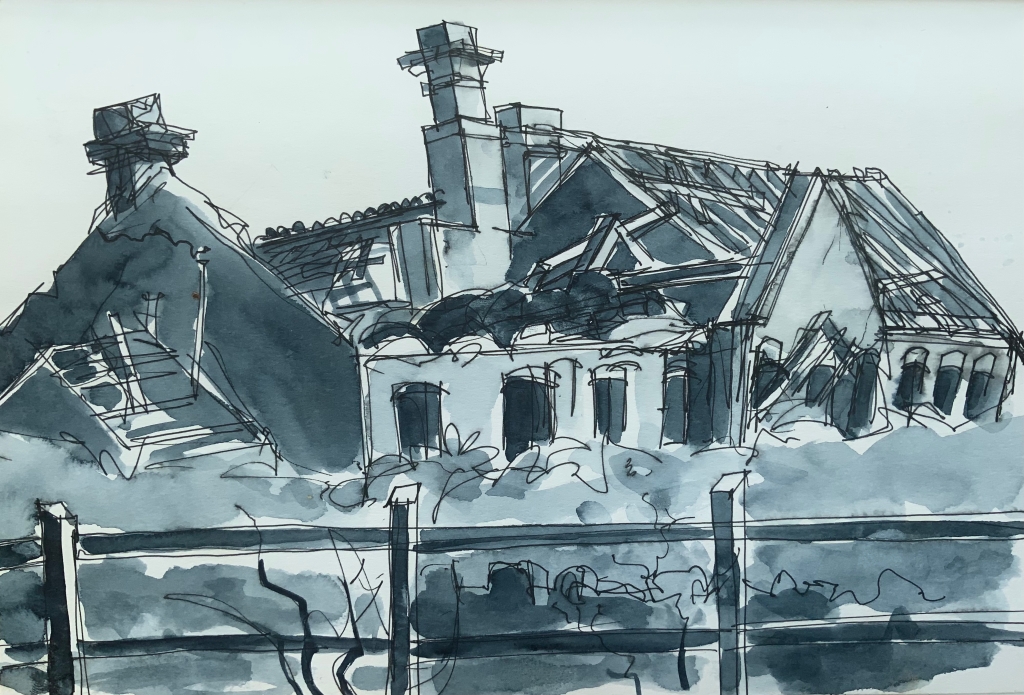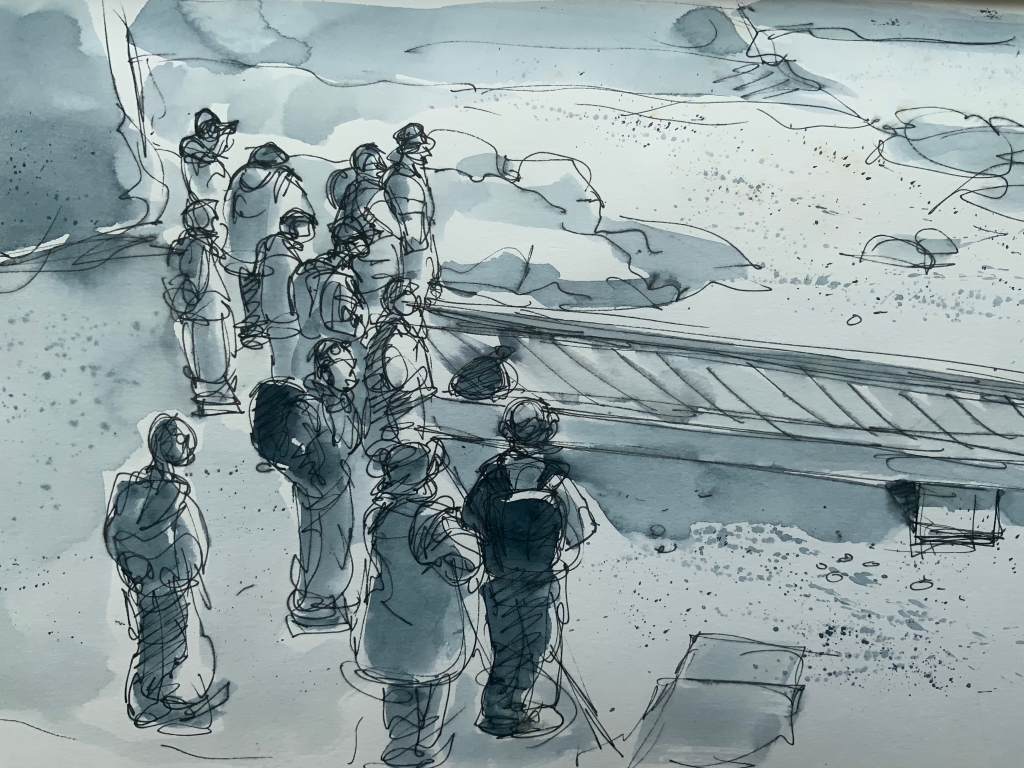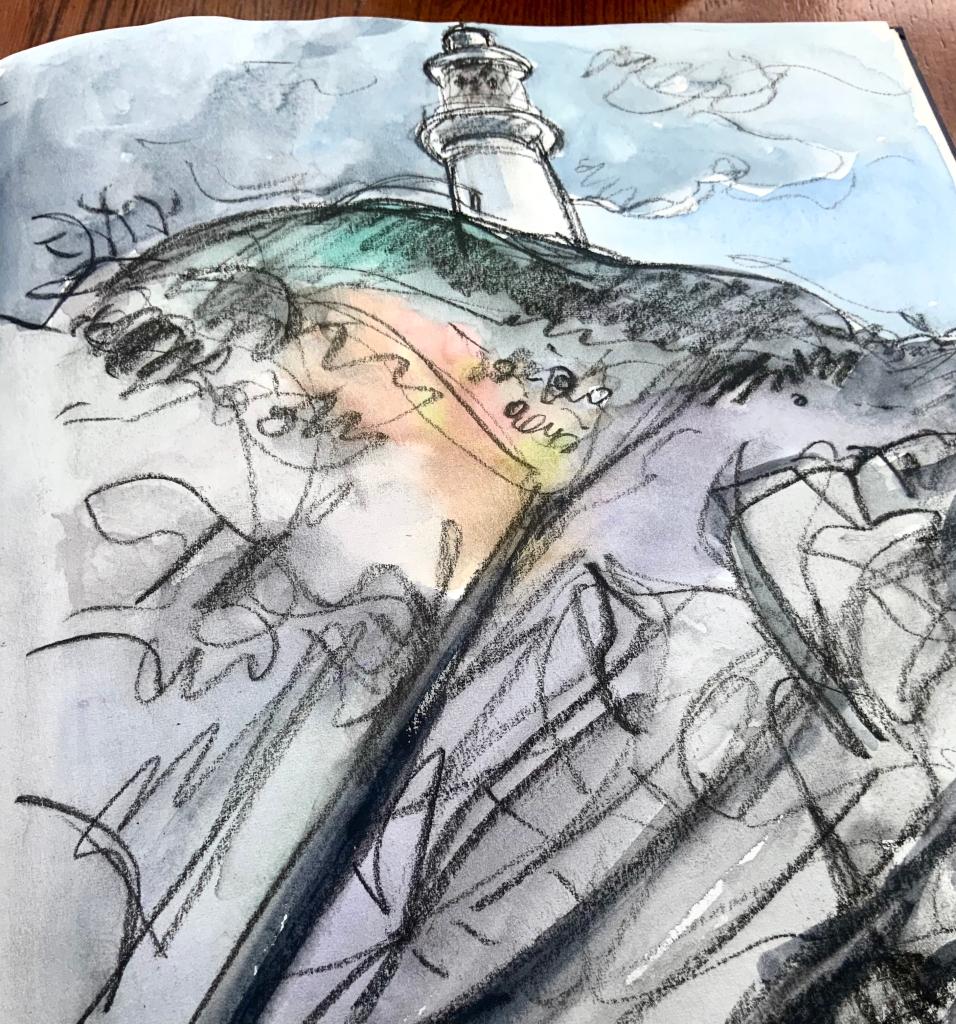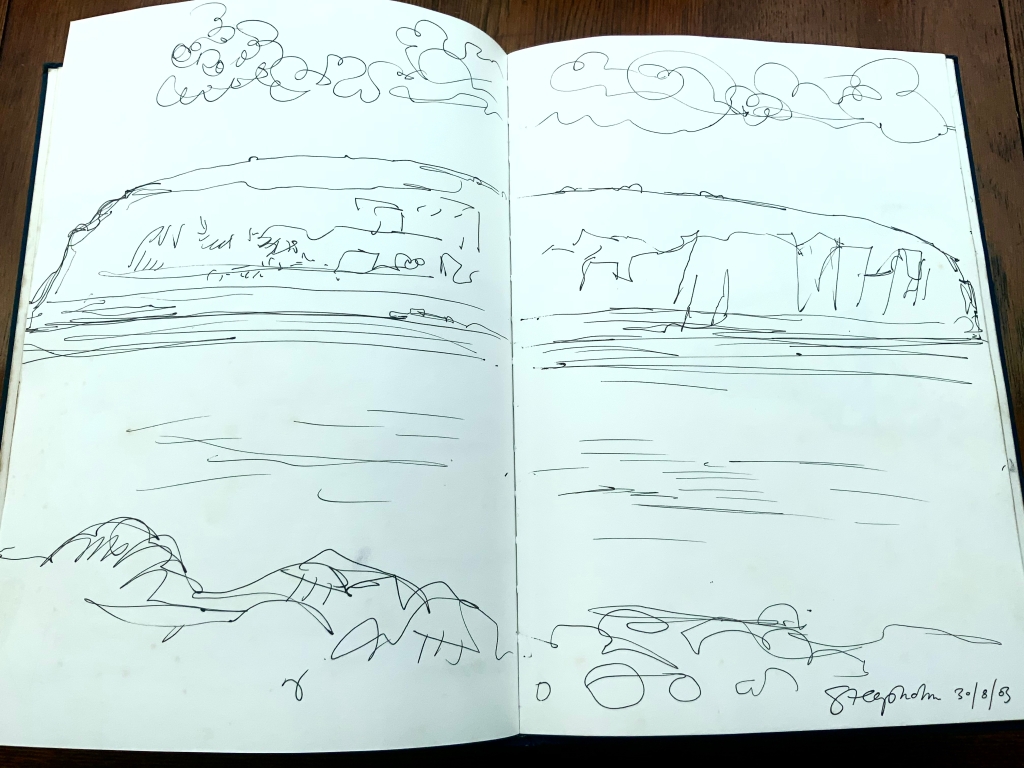Tags

There’s been plenty of time to experience different levels of isolation, solitude and loneliness during the pandemic. The idea of living as a hermit or being marooned on a desert island has acquired new associations. In lockdown the immediate landscape turns into a kind of island.
Revisiting sketchbooks led me to a visual account of trips to Flat Holm /Ynys Echni eighteen years ago. The island is the furthest South you can go in Wales. Its closest neighbour is Steep Holm /Ynys Rhonech, 4km away, part of Somerset.
In April 2003 the newly formed Cardiff Drawing Group joined members of Flat Holm Society on a day of repairs, gardening and tidying up. I took pens, conté pencils and some Payne’s Grey ink. I thought it might help in the long term.
Flat Holm has several historic layers, laid down by Saint Cadog in the 6th C, sheltering Vikings, Marconi’s wireless tests and military personnel defending port cities from naval and aerial attack. It’s dotted with structures in varying states, from a former farmhouse, to Victorian barracks, WW2 gun emplacements and a defunct foghorn station. A cholera isolation hospital built in 1896 was still hanging on and facing England is a large water catchment. When I read the Strugatsky brothers’ Roadside Picnic last year, with its abandoned alien debris, it reminded me of a land-locked Flat Holm. The Zone.
[click on pics to enlarge]


I gained an invigorating sense of the coastline and the city of Cardiff as they receded from the small ferry out of Barry. Unvisited places on the far side glided into focus: Clevedon, Middle Hope, Weston-super-Mare. Cardiff has a habit of clouding over in the afternoon, but here the light stayed clear, casting strong shadows on unfamiliar forms. I chatted to a retired couple who said they’d visited many wonders around the globe but this was the one place they felt compelled to return to. It felt a bit being like being stranded on a large roundabout on a fine day.
Various teams engage with Flat Holm, co-ordinated by the Cardiff Harbour Authority. When we visited you could stay on a bunk in the farmhouse. The island’s currently closed to visitors. The massive 15m tidal range restricts when it’s possible to land a ferry. It’s a Site of Special Scientific Interest, with a microclimate that hosts unique wild leeks. The time to avoid is May-June when gulls are defensively nesting. When we visited, the beach was littered with chicken bones. Members of Flat Holm Soc boldly went and filled a wheelbarrow with ex-gulls, some in a pristine state, mostly killed by botulism from scavenging on Cardiff’s landfill.
Before the pandemic volunteers started converting the fog horn station into guest accommodation. In 1988 its doleful sound stopped as the tech was superseded, and it has remained silent since a documentary in the 90s, mainly to spare the gulls. Its engine made a great drawing subject. I hope it’s still there.

It was great to travel with friends and meet new people through a shared experience in landscape.
The drawings vividly recall a serene return journey over a turquoise Bristol Channel (often a silty brown).

Late August 2003: a second visit, this time with colours.
“….Now I will believe
That there are unicorns, that in Arabia
There is one tree, the phoenix’ throne, one phoenix
At this hour reigning there.”
Sebastian to Alonso, Act 3, The Tempest – William Shakespeare.
I’m currently researching a project based on The Tempest with poet and translator Luca Paci. We’ve been reflecting on wonders in the local landscape, the disjointed passing of time in lockdown and the limits of self-help culture. This sketchbook provides a mine of images and ideas.
Next stop: Steep Holm. Have you been there? Please let me know what it’s like.


















